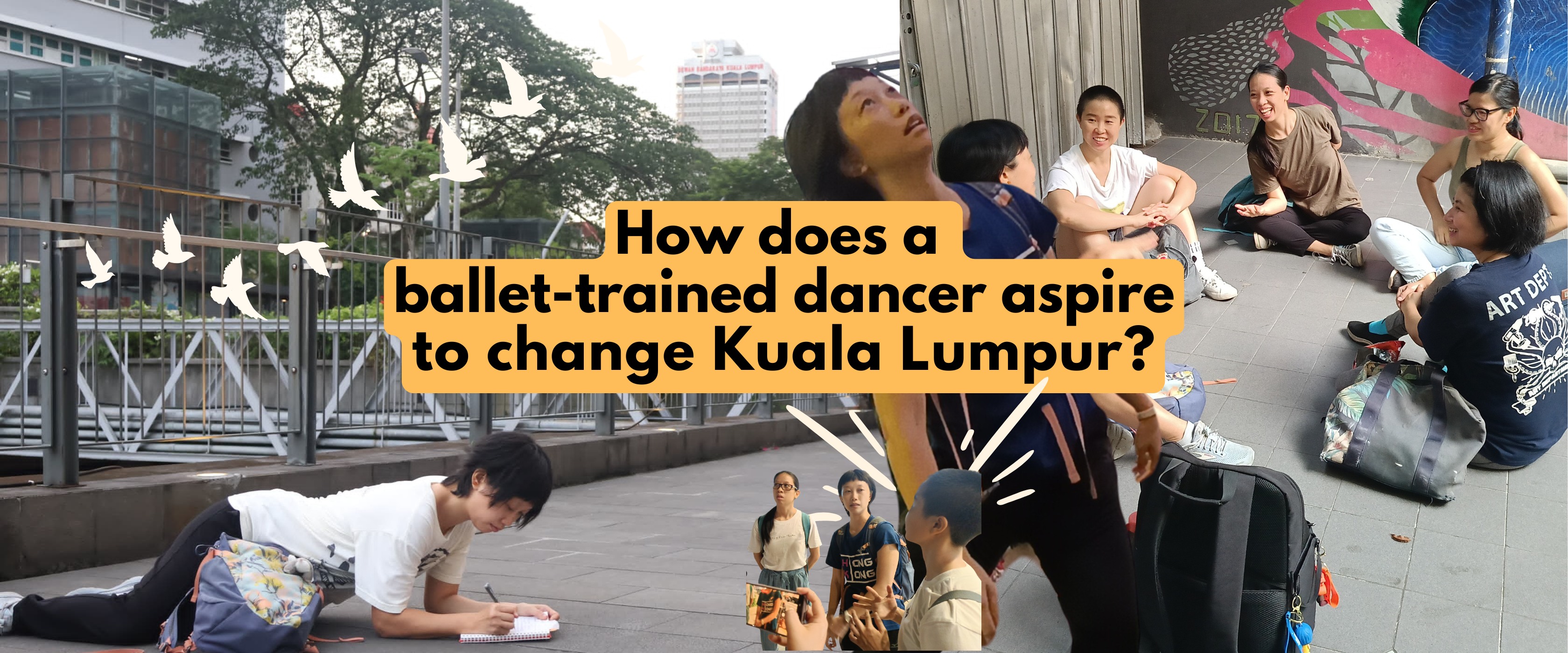
Corporations such as PNB Merdeka Ventures, Think City and DBKL are
initiating many projects in downtown KL for Malaysians to know this city. How does a ballet-trained dancer
create a project that’s parallel with them?
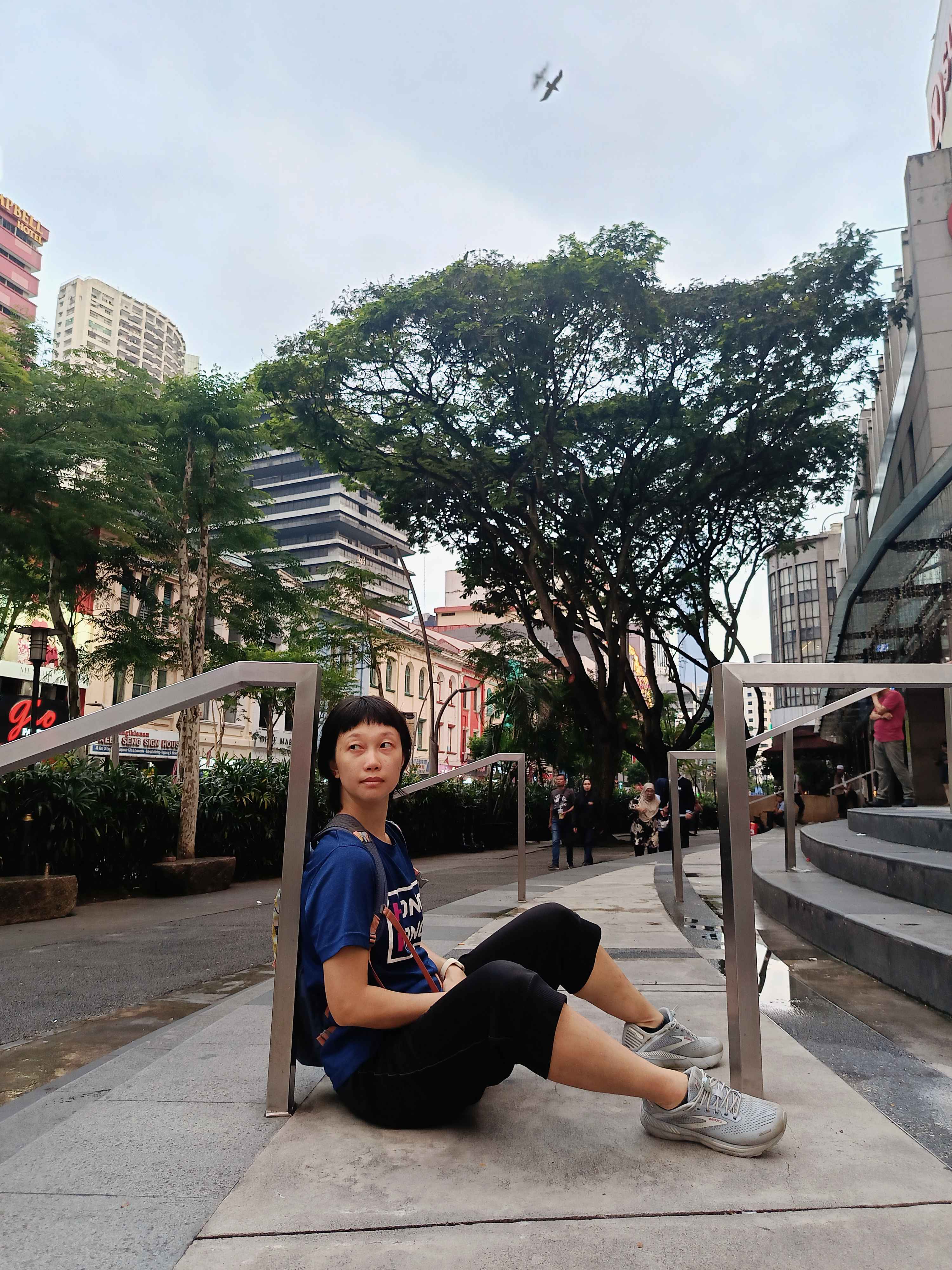 Lee Ren Xin by
Sogo Steps, by Meshalini Muniandy.
Lee Ren Xin by
Sogo Steps, by Meshalini Muniandy.
"I dream of more Malaysian bodies spending time in shared spaces,
encountering differences. To sense the possibility of shaping how this place could be. Our collective
power is more than we think. Then, the city becomes something we experiment with - test things out -
instead of a detached, out-of-reach monument," Lee Ren Xin shares.
An overarching theme in this
dancer’s work to date is how to share a space, or how (we want) to live together. This art activism article
by Five Arts Centre is to introduce the process of Re-Public, a movement and a practice that
reconnects individuals to their bodies and the urban environment, challenging conforming notions of public
space.
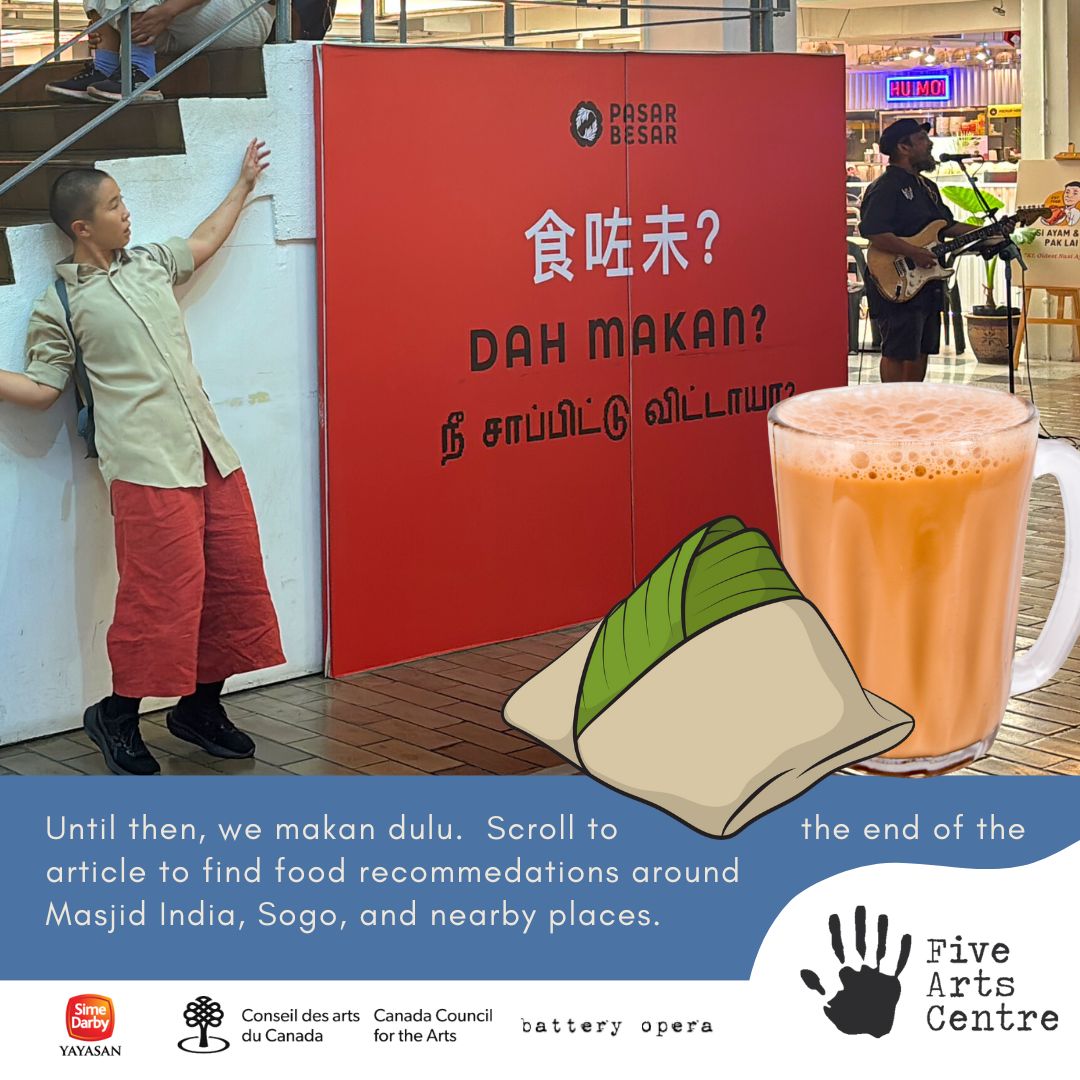
Breaking Free: Challenging Existing Notions of Public Space
Becoming familiar with the city is one large aspect of Re-Public. But the invitation to go within, and to zoom out to our surroundings, while learning how to navigate around other bodies, can open a floodgate of sensations.
I’m like a cat. Shifting until I can find the right composition for my body to settle in that ground. Edge of my spine hurts. Concrete is cold.
 Black Cat in Masjid
India, by Meshalini Muniandy.
Black Cat in Masjid
India, by Meshalini Muniandy.
The physical
sensation of bodies is often an ignored consideration for successful cities locally. René Boer’s book Smooth City
explores this notion in-depth and why it’s problematic. Because it "leaves almost no space for
anything that is experimental or incompatible with the dominant norms."
As Ren Xin shares her motivation with us, she mourns the loss of relationship in urban human dwellers to our landscape. Birds still fly in a circular formation in the city when they sense a storm is coming. Even house cats, would fluff up their fur before it rains. How about us?
Re-Public currently takes place within Klang Valley. It borders around Batu Road, Masjid India, Sogo, tebing sungai Pasar Seni, Dataran Merdeka, and the vicinity in and around here.
How Does a Location Hold Space for this Practice?
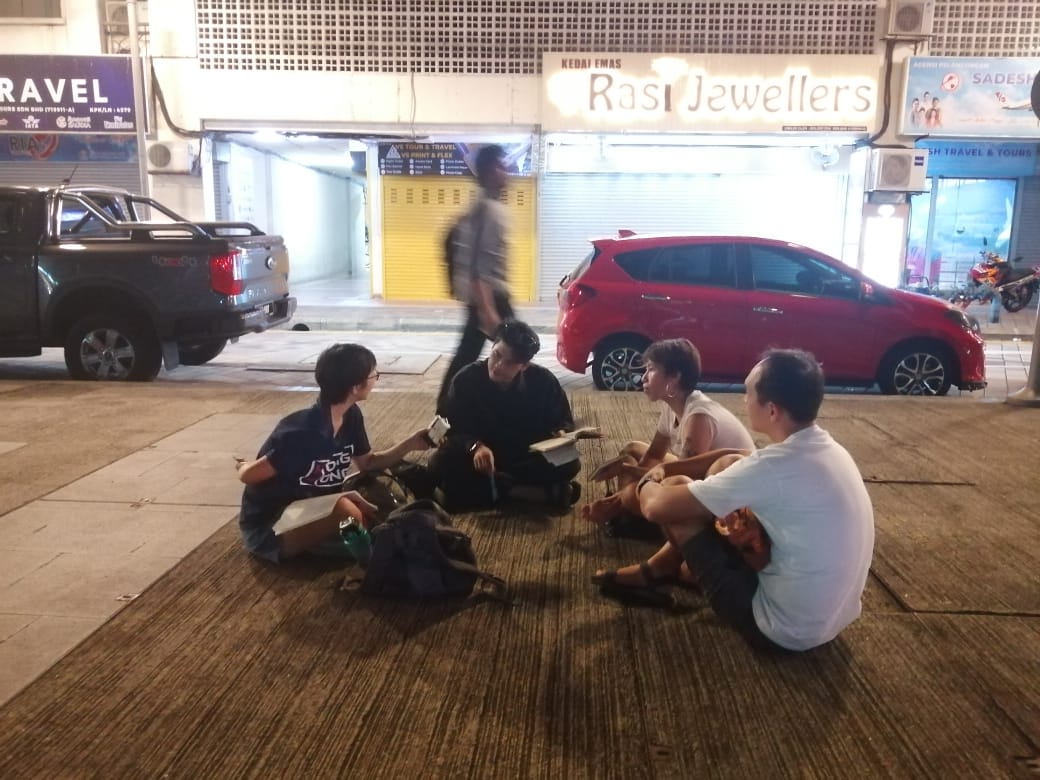 Sitting
by the Roadside, by Rupa Subramaniam.
Sitting
by the Roadside, by Rupa Subramaniam.
Literal space. Areas with a wider pavement, with room for bodies to move
leisurely. Eventually, the research could be satisfactory and the collective would move on to another
location, like a flock of migrating birds.
This artist didn’t land here quickly. She’s carried soft twigs from her various city walks for the last seven years, forming a nest to hold Re-Public.
In Jalan Harapan (2017-2020) where she began a daily ritual of walking, dancing,
and and finding opportunities to collaborate on collective movement with folks who live in and around the
neighborhood where she grew up in Petaling Jaya. Eventually, to invite more bodies onboard, she shortened
the time commitment needed for the idea to spread widely.
In hindsight, Anggota (2022) and Anggota: Re-Member
(2023) appears an internal investigation for Ren Xin to try to understand what’s in her body, that was
excavated through creating performance. She won several awards for it.
However, Where Are You: A Walking Study (2020) is probably closer to
what Re-Public is now, in terms of inviting 20 virtual participants to get reacquainted with where
one lives — the larger composite picture that we are a part of.
A Collective
Awakening: The Power of Shared Experience
Now, part of Ren
Xin’s intuitive process is to observe what is forming, emerging as an effect, a metaphor, or image brought
forward by the collective bodies. She notices what is being weaved, built over time. What lands –
after?
“What is the power of living bodies in relation to
the city, aside from passively moving through it? Does the body (collectively) have a say on the evolving
landscape?” she asks. 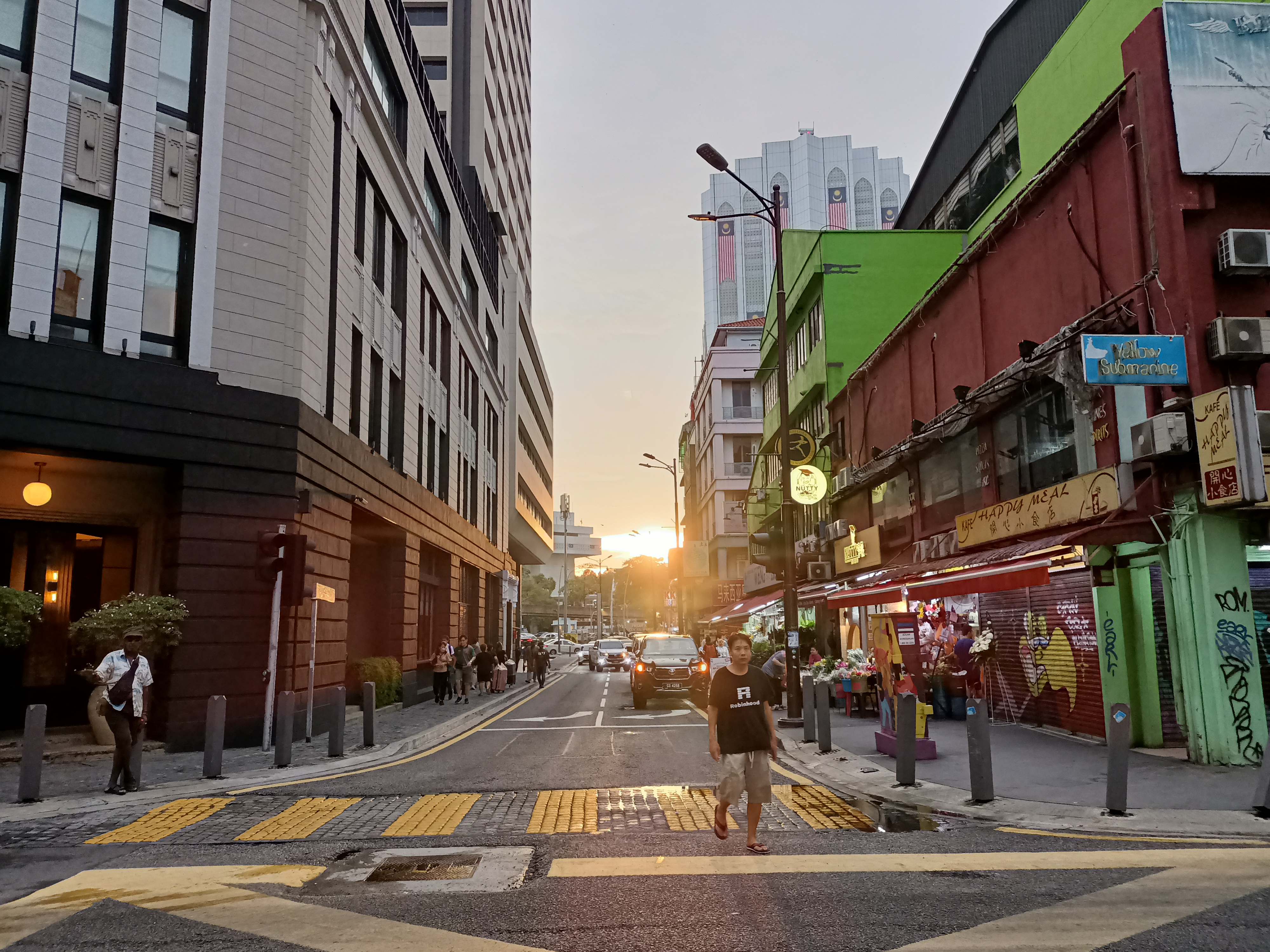 Sun
rest in the City, by Lee Ren Xin.
Sun
rest in the City, by Lee Ren Xin.
Experiencing
Re-Public was like grasping and lifting a veil off my body’s
defensiveness.
It slowly disintegrated,
dropping old coding of coping mechanisms. Fear of others. Of being seen. It allowed me to get
reacquainted with my desire to walk with the wind, and get carried by the caresses of onlookers, thriving
and flirting with the environment.
Weaving Connections: Building Community Through
Movement
The next time I was there was to observe inside Semua House, rather than to join in as a participant. I immediately lie down. My back agrees with my decision. Ren Xin invited us to do the next thing we can, to be a bit more comfortable, a prompt she inherited from Lee Su-Feh.
She leads by asking, what does agency feel like in this body right now? Someone says, “there’s a tightness in my right rib cage.”
I hear Tamil pop songs blast from New Madras, alongside the sudden blares of traffic and honks. The birds believe they have a responsibility to announce the sunset, so they scream like a siren. Of course, there’s this voice in my mind, noticing and making comments on all these various inputs.
The next person in the circle says, “I feel the
gentle breeze on my cheeks.”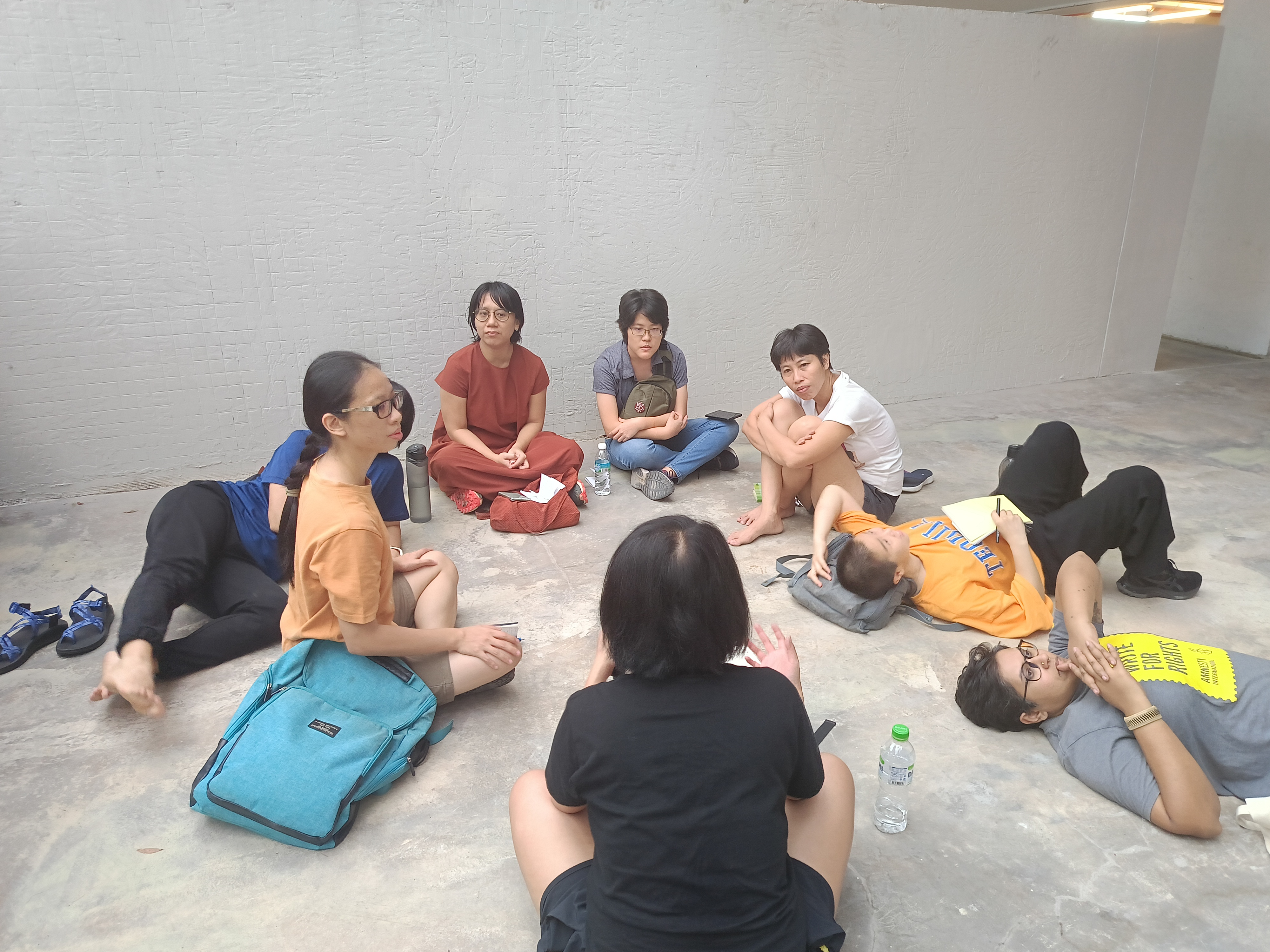 Practice
in Semua House, by Meshalini Muniandy.
Practice
in Semua House, by Meshalini Muniandy.
It gets
progressively more difficult to hear the very soft spoken Re-Public collective, so I sit up again.
This time, I notice how Okui Lala’s eyes drift between a space further away from here, and glimpse back and
forth before she speaks. She takes her time. “Hearing this sharing, what this sensation means, recognizing
that for every body it is different – opens me up for an experience I may not encounter myself, but I can
see how it may affect another member.”
Each person completes the check-in,
a typical way of starting a Re-Public session, and the last person ends by sharing, “the tiles my
bum sits on is slightly uncomfortable, but I like that its cooling me down.”
The Politics of the Body: Resistance and Resilience
Another day, another session. Farah Rani practices
the prompt to take this body side-by-side with other bodies being present, to share space. She parks a
question to the group, “I do feel that it becomes more of a spectacle, when we turn up the dial with our
voices (and movement). I wonder if turning up that dial, even if it attracts attention, if it lowers the
dial for invitation. Maybe it becomes too much?”
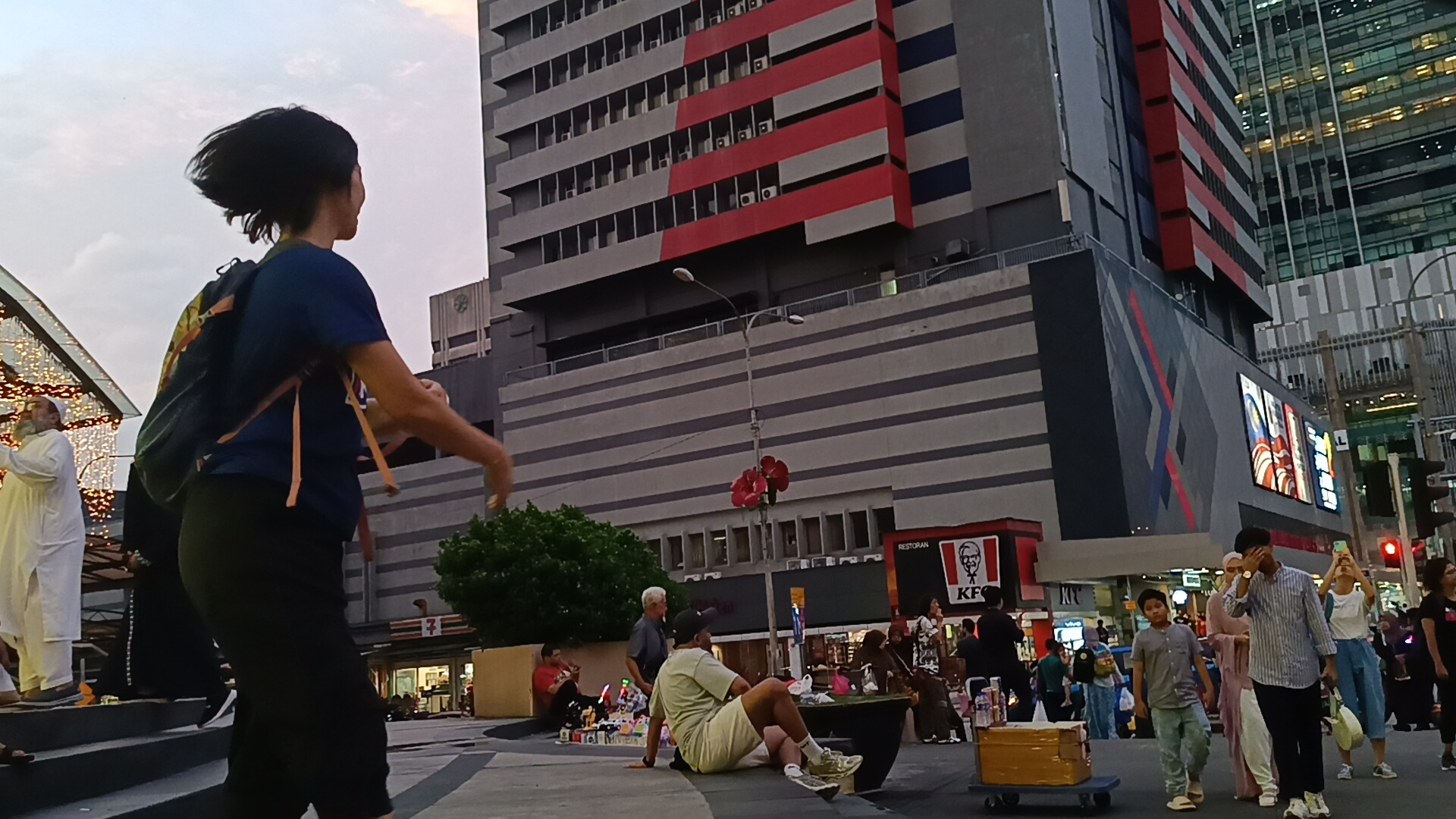 Ren Xin by Sogo
Steps II, by Meshalini Muniandy.
Ren Xin by Sogo
Steps II, by Meshalini Muniandy.
Ren Xin responds with, “I sense in the moment, a little bit like the
I’m okay, You okay?
thing. A reminder that it is normal and fine to be different. I’m responding to all the bodies and
energies and happenings here, while navigating towards my intention, and making sense in present time what
is more relevant in each moment.
Navigating the Urban Landscape: Choice-Making in Real
Time
Each step invites a continuous non-sequential loop of sensing, adjusting, and allowing. “The charge here is stronger than outside.” Silver Yee shares with the collective while practising inside Central Market. “We’re more alert with the space, as well as the collective and others, especially the security guard. More things shifting (inside) for me.”
Allow stares to linger gently, and then slide through.
“I have tried moving in the park, on my own. It is difficult to start that
journey. Being in a group really helps. By witnessing each other, it makes it all less alone,” Chloe Tan
adds to the conversation.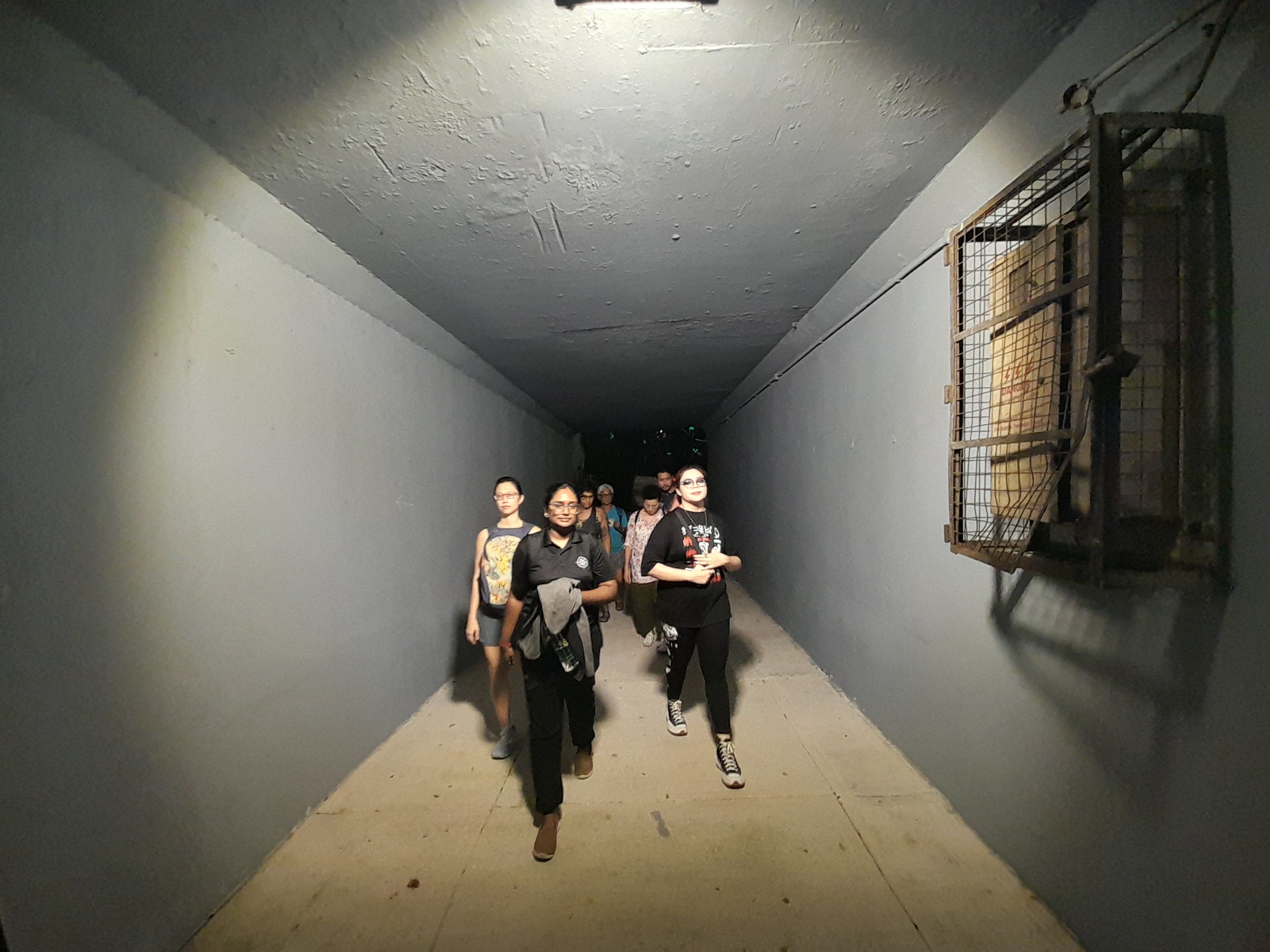 The
Re-Public Walks by a Tunnel, by Theyvapaalan S Jayaratnam.
The
Re-Public Walks by a Tunnel, by Theyvapaalan S Jayaratnam.
The next step is softening around obstacles, adopted from Su Feh’s Scores for Dancing Across Distances. Rather than making oneself quieter or less visible, it is a practice to notice that there’s an internal narrative that is being evoked about feeling “wrong”. It is to be gentle with that feeling, but to continue moving with the collective, without freezing.
Chloe shares, “I notice so many different kinds of energy happening. The
sound of the traffic. Oh! And then the kids’ voice was getting crazy! Oh my god, it’s a lot! Where am
I?”
A Collective Journey with The Larger Body
“But, I remember how the
river will carry my voice. That’s where I lean into for support to sound. So I’m not pushing my voice out, I
imagine my voice flowing with the river. So I take that imagination, feeling and sensation, and I sound. A
soft voice.”
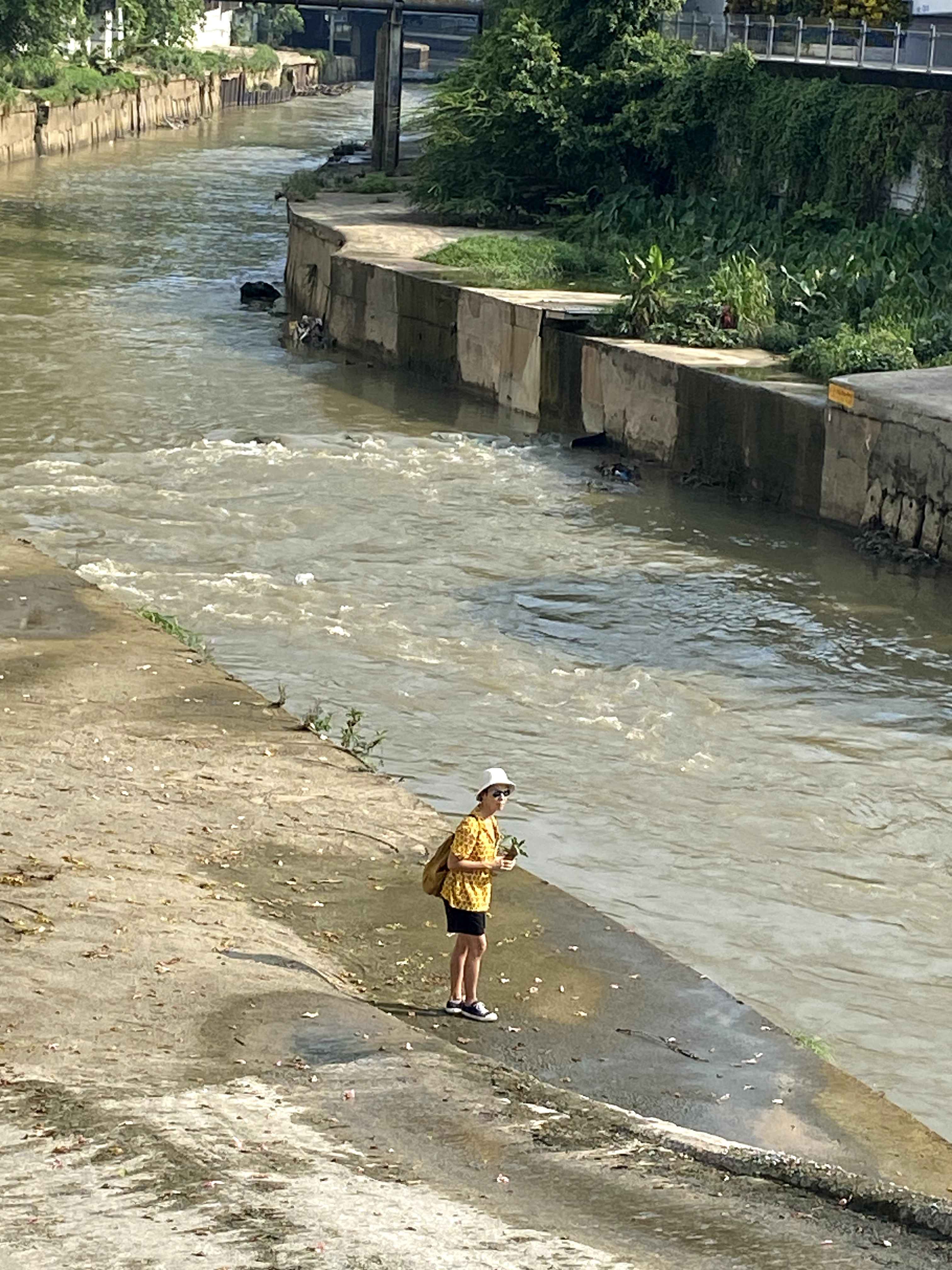 The Riverbank, by Anne
James.
The Riverbank, by Anne
James.
Maisyarah Mazlan confesses that she
sits in the car for several moments before joining the collective, for the first few weeks. The
acclimatization took a while. I believe when there’s an articulation over these fears, there’s also a magic
of dissipation. Re-Public doesn’t undermine this discomfort, rather it offers an alternative
experience: tools to support and a collective to witness, and perhaps more importantly, an invitation to
grant ourselves permission.
A Practice of Constant Learning and Parallel Adaptation
It is evident that this project has sparked transformation for every body that has participated. For some collective members more support was required than others. Some resolved, others not. It is also mirrored in the process of the artist herself.
Ren Xin says that there are at least two processes unfolding at the same time throughout the Re-Public timeline. One is her own personal artistic process, the other is the project’s process. The two overlap, but are noticeably two different journeys.
“I started with how I sense Re-Public to be. Then I worked backwards
to find what Re-Public is – in this year’s chapter, anyway.”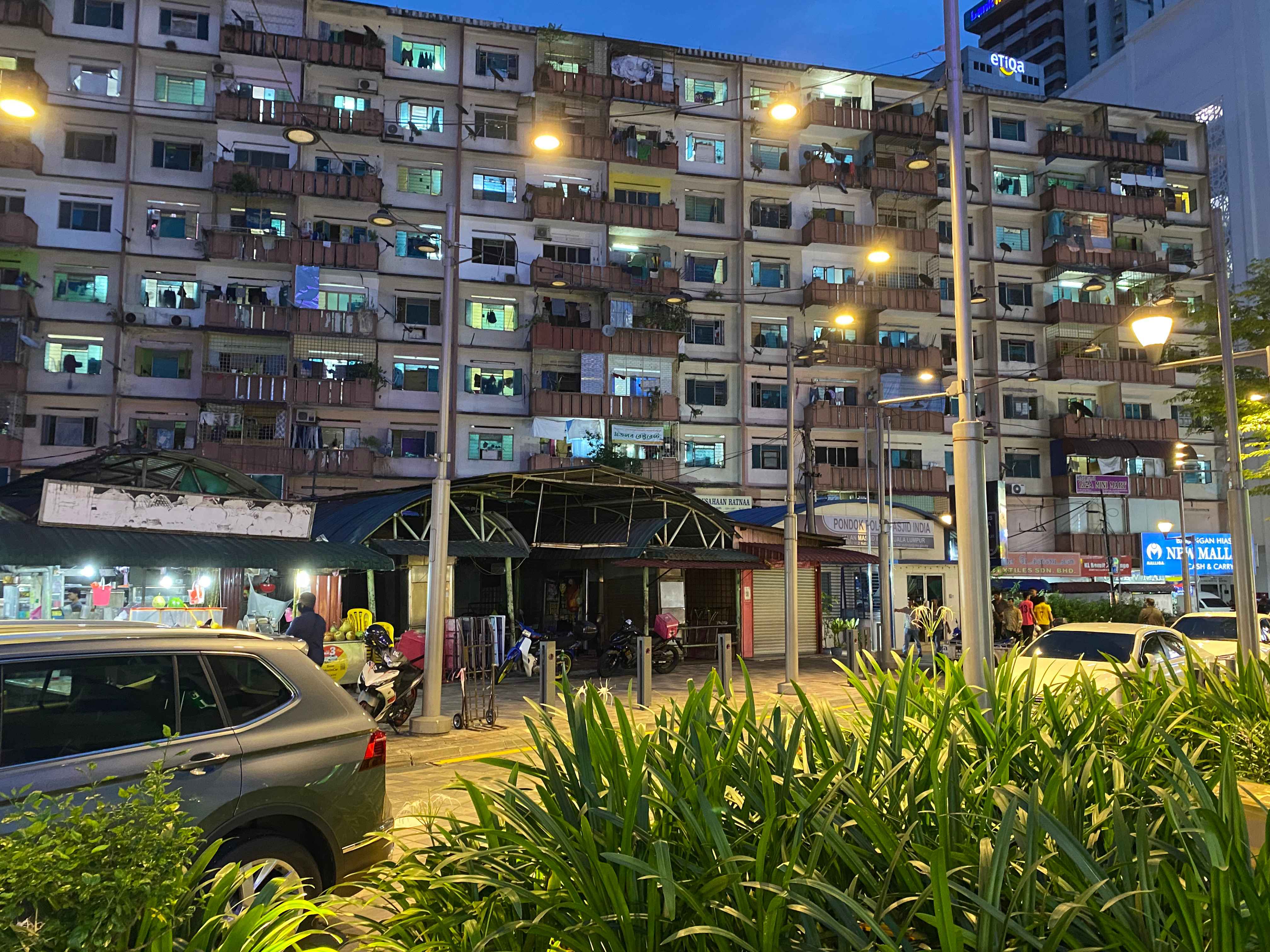 Selangor Mansion, by
Anne James.
Selangor Mansion, by
Anne James.
And it evolves with each
individual interpretation of the process and the public’s perception of it, moulding, melting and morphing
together, creating a cob-web of intertwined processes.
The Influence of Resmaa Menakem
Ren Xin's work draws inspiration from Resmaa Menakem's concept of the vagus nerve as the "communal nerve" where we feel a sense of belonging. Identified in 1921, it is the unifying organ of the entire nervous system, that communicates through sensations and has about 100 million neurons.
“I read this book some time in 2020. Maybe in the third quarter. I was
like, whoa, this is it! I wanna do what Resmaa is proposing, is asking, is pronouncing, is suggesting; that
socio-political transformation is to start from the body, and then collectively with other
bodies.”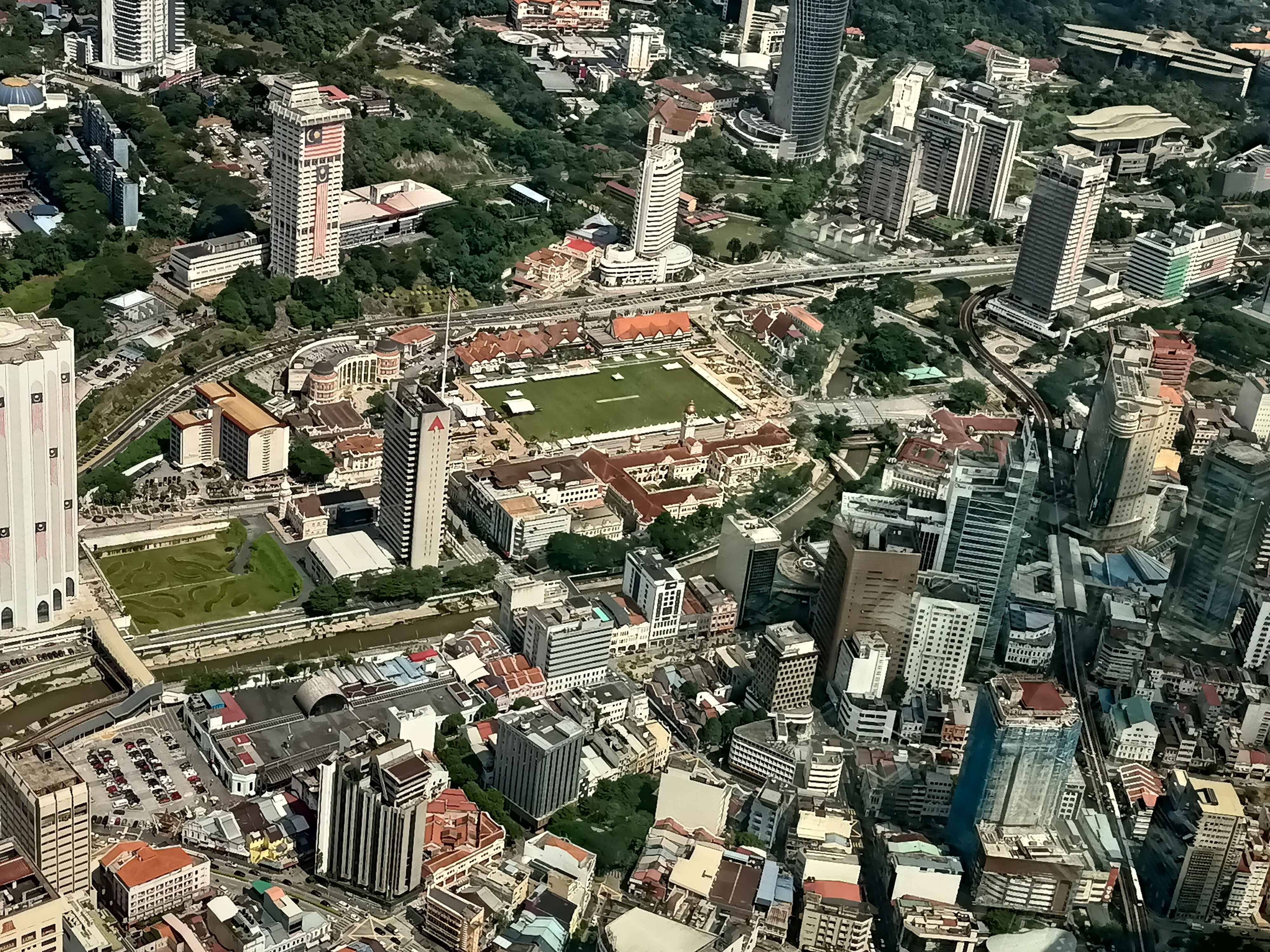 KL City
Bird’s Eye View, by Lee Ren Xin.
KL City
Bird’s Eye View, by Lee Ren Xin.
Menakem's My Grandmother’s Hands is profound to how Ren Xin assimilated
the knowledge where the body feels belonging. And also feels connected to self and each other. Ren Xin
adds, “I feel this is the basis from which then grows sense of ownership and collective agency to action for
change.”
“It will take a long time. But the time to start is now.”
Re-Public is a long-term practice-as-research by dance artist, Lee
Ren Xin on collective embodiment in public spaces, delving into how the multi-directional dynamics in our
social landscape and cultural contexts could be addressed from another angle - i.e. body-centered and in
physical, public space. Re-Public is presented by Five Arts Centre and supported by Yayasan Sime
Darby, battery opera, and Canada Council for the Arts.
Curious? Five Arts Centre is pleased to present several public events in
November 2024 that allow you to experience, participate and discover this unique, long-term
project.
Besides the recently concluded workshops and
in-practice sessions, join Lee Ren Xin for a talk on the process and insights behind Re-Public.
The talk will take place on 30th November 2024 at 3.00pm at the Five Arts Centre studio, GMBB KL. This is a
free event - sign up
here.
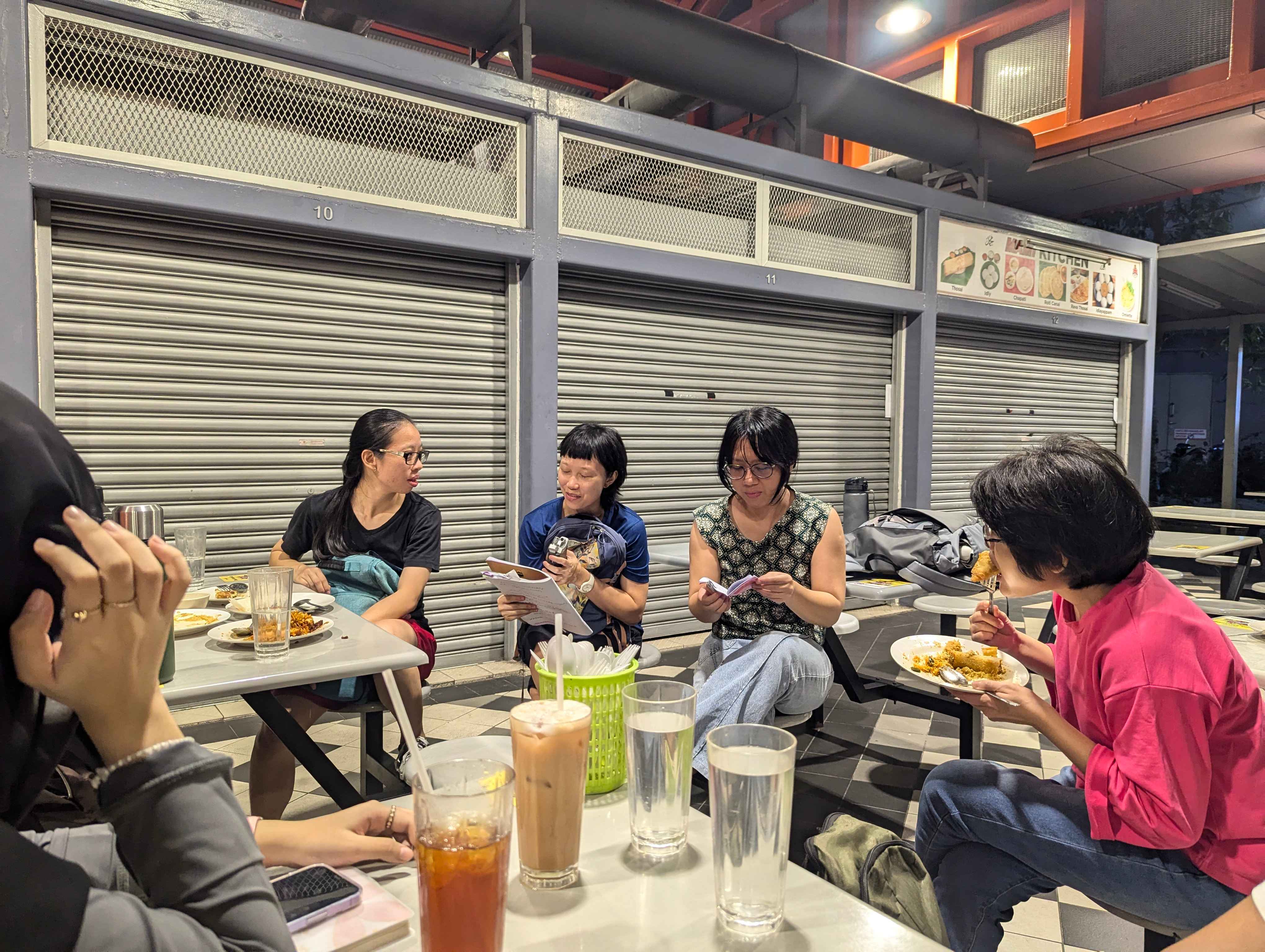 Enjoying
a Lanka Taste, by Ren.
Enjoying
a Lanka Taste, by Ren.
Re-Public is made possible by the collective effort of members –
current, and earlier teams. They have also shared their favourite makan finds in downtown Kuala
Lumpur:
Lee Ren Xin
finds the Rava cake (or vettu
cake) sold by a woman at the kaki lima in front of Elevator 7 of Malayan Mansion on Jalan Masjid India a
precious snack. Goes super well with black coffee – can tapao more home to eat next morning, YUMZ. The
parrupu vadai is also very good.
“When I recall its texture (cookie-ish on the outside, then sweet melting
taste, my chest melts, my eyes close, I take a slow deep luxurious breath, and I exhale.”
Anne James
enjoyed the rich dishes that came with fresh roti naan in Lfa Maju Beriani
House Cafe, by Jalan Tunku Abdul Rahman.
Rupa Subramaniam
was reminded of her mom’s favourite meal, the mamak mee goreng basah in
Restoran Ajmalkhan, located in Selangor Mansion. The yellow noodles was soaked well in kicap-egg-chili
gravy. Actually kan, she didn’t even order it. She curi a bite (or maybe more) from Ren Xin’s
plate.
Faiqswazwan Kuhiri
says he had the best masala tosai
with chutney in Kuala Lumpur kat ABC Bistro in Masjid India.
Rahmah Pauzi
is often spotted with ice cream or keropok lekor on other days.
Chloe Tan
loves the muruku and sugee cake at Madras Bakery, found nearby Medan Selera
Masjid India.
“I felt like a lil kid entering a candy shop. So excited to see so many different types of murukus and cakes and seeing the staff preparing hot tea/coffee next to the counter, the aroma in the air is amazing!”
Silver Yee
discovered a mashed eggplant dish from Restoran Lohojong Bikrampur KL. It is
located at the corner of the intersection between Jalan Tun Tan Siew Sin and Jalan Hang Lekiu. The eggplant
is cooked with multiple spices and has a delicate mustard taste. “It is surprisingly tasty! The soft and
moist texture comforts me.”
Okui Lala
says one of the most memorable food she’s had is from Burger Shark in Medan
Bunus. “I like how they pack the burger with the tissue and label it (handwritten!). It gave some texture
to my dinner that day. We dapao it and walk to dataran after that.”
Farah Rani
enjoys the Chicken kothu roti at Lanka Taste in Medan Selera Masjid India.
“Each bite is a flavour bomb. Also owner and servers are all warm.”
Project Lead: Lee Ren Xin
Practitioner dramaturg / research
development coach: Teh Tian Yoon
Conversation partner, score and
practice support: Lee
Su-Feh
Producer: Hoe Hui
Ting
Production Manager: Meshalini
Muniandy
What kept the production
manager/photographer going? Masala chai and bru coffee sold by an akka (sometimes her husband or children
takeover) with a portable stall in front of Haniffa. So so GOOOD. “Every time after I take a sip, I want
to hum a tune and gentle bounce to a chill rhythm. And my face will smile, and my forehead will feel
widened.”
Re-Public also especially thank folks who have made this process
possible: Wong Tay Sy, Takahara Suiko, Mark Teh, Bernadette Anne Carpio, Ganiswary, Aramy Rasyid, Azif
Fazriq (Doro), Nur Alyaa Afifah, Ong Xian Jinn.
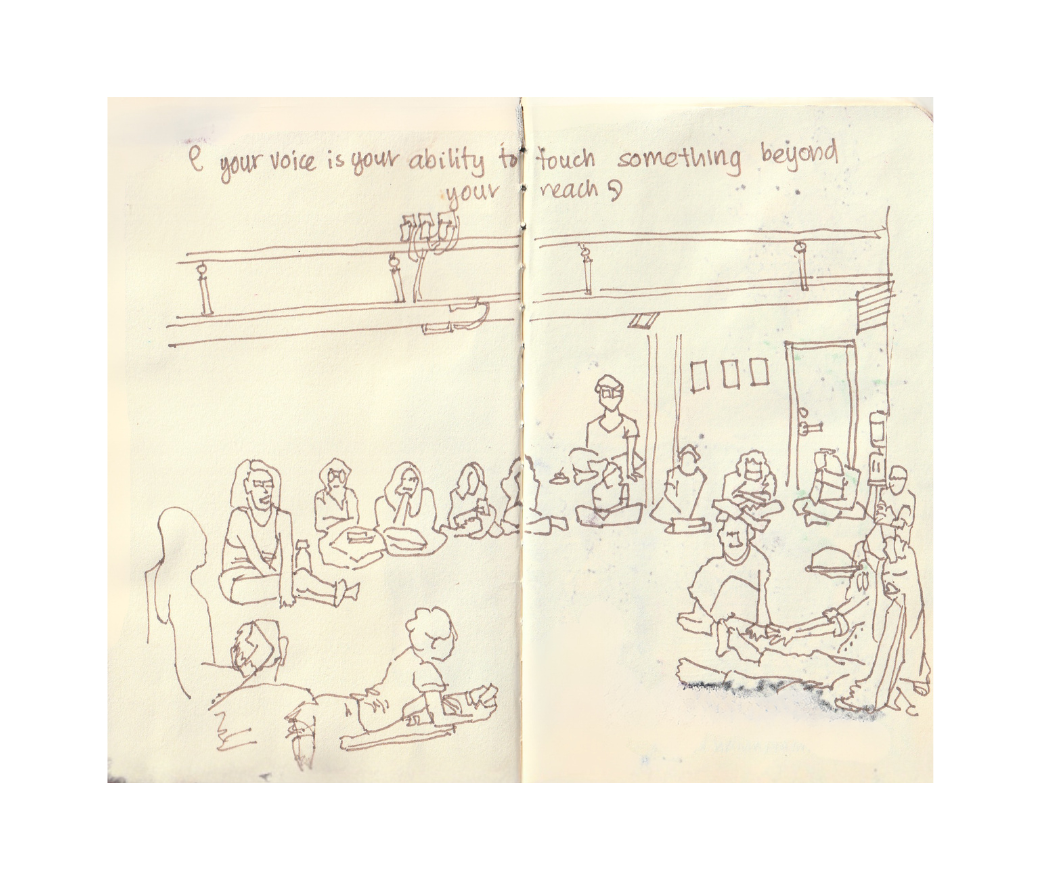 Touch
Me Hold Me Let Me Go Workshop with Su Feh, a sketch by Rupa
Subramaniam.
Touch
Me Hold Me Let Me Go Workshop with Su Feh, a sketch by Rupa
Subramaniam.
This commissioned article is written by Rupa Subramaniam, whose
work intersects between digital strategy, art and social justice. Experience her work on
www.skinandsoul.art.